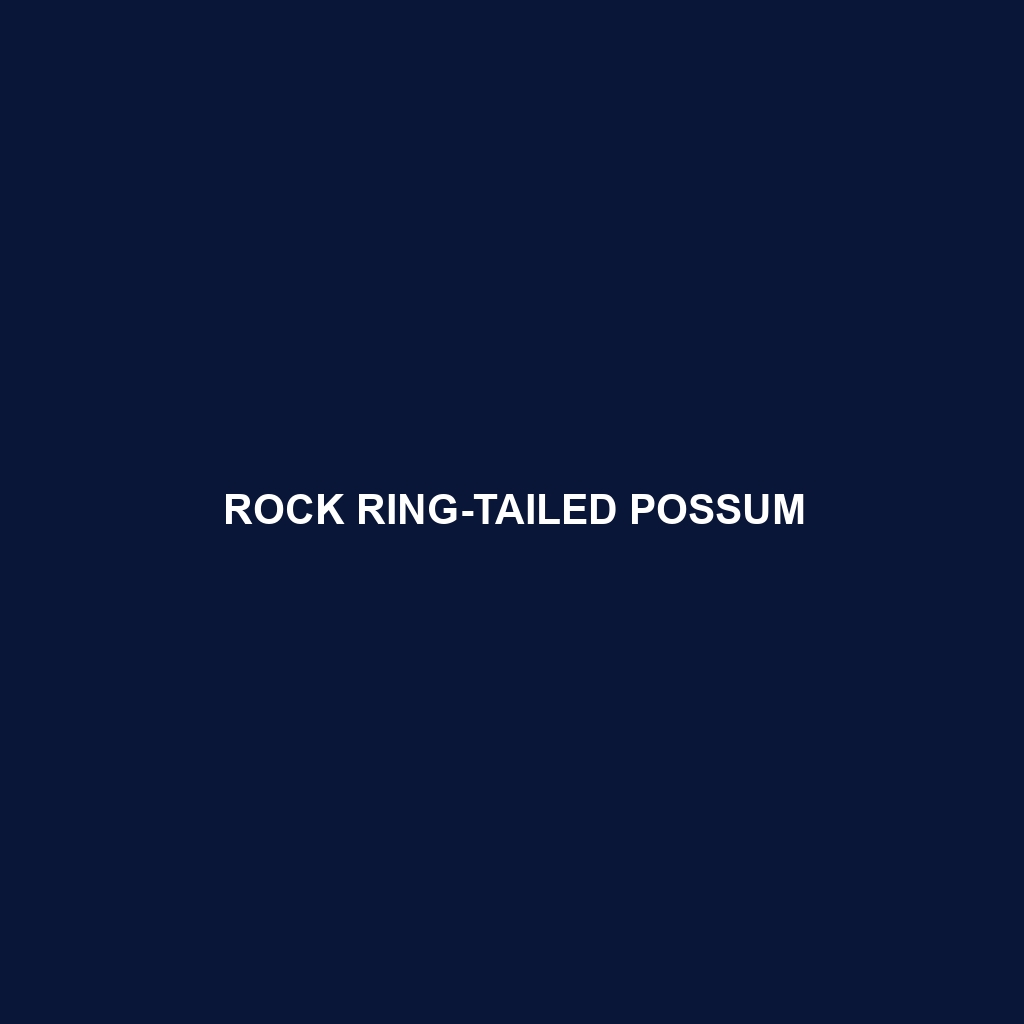Rock Ring-tailed Possum: A Detailed Overview
The Rock Ring-tailed Possum (Petropseudes dahli) is a unique marsupial native to the rocky outcrops and escarpments of northern Australia. Known for its striking appearance and specialized habitat, this possum is a nocturnal herbivore that plays an important ecological role in its environment. With a distinctive ringed tail and adept climbing abilities, the Rock Ring-tailed Possum is both fascinating to observe and critical to its native ecosystems.
Physical Characteristics
Size: The Rock Ring-tailed Possum is a medium-sized possum, measuring approximately 30 to 38 cm (12 to 15 inches) in body length, with a tail that adds another 30 to 35 cm (12 to 14 inches).
Weight: Adults typically weigh between 900 grams to 1.4 kilograms (2 to 3 pounds).
Coloration: This possum’s fur is typically dark grey or brown on the back, with a lighter, often white or cream-colored underbelly. Its fur is thick and plush, providing insulation against the cooler temperatures of its rocky habitat.
Special Features: One of the most distinctive features of the Rock Ring-tailed Possum is its prehensile tail, marked by prominent white rings. The tail is crucial for balance and grasping branches as the possum navigates its rugged environment.
Behavior
Social Interactions: Rock Ring-tailed Possums are generally solitary, but they may occasionally be seen in small family groups, particularly during the breeding season. They communicate through a variety of vocalizations, including clicks, grunts, and hisses.
Feeding Habits: These possums are herbivores, primarily feeding on leaves, flowers, and fruits. They have a cecal digestion system, which allows them to efficiently break down the tough cellulose in leaves.
Ecological Role: As herbivores, Rock Ring-tailed Possums play a vital role in their ecosystem by aiding in seed dispersal and maintaining plant community dynamics.
Habitat
Natural Habitat: This species is specifically adapted to live in rocky outcrops, escarpments, and boulder-strewn environments. They favor areas with dense vegetation that provide ample food supply and shelter.
Geographic Range: They are primarily found in northern Australia, including parts of the Northern Territory and Western Australia. They are highly specialized to their rocky habitats and are seldom found in other environments.
Adaptations
Physical Adaptations: The Rock Ring-tailed Possum has strong limbs and a prehensile tail that enable it to climb and navigate rocky terrains with ease. Its thick fur provides insulation against the cooler temperatures often found in its high-altitude habitats.
Behavioral Adaptations: Nocturnal by nature, these possums have large, sensitive eyes that help them see in low-light conditions. Their solitary and secretive behaviors also help them avoid predators.
Conservation Status
Current Status: The Rock Ring-tailed Possum is currently listed as “Least Concern” by the International Union for Conservation of Nature (IUCN). However, habitat destruction and climate change are potential threats that could impact their populations in the future.
Conservation Efforts: Efforts to preserve their habitat through protected areas and conservation programs are essential to ensure the continued survival of this species.
Fun Facts
Unique Grooming: The Rock Ring-tailed Possum has a specialized grooming claw on its second and third toes, which it uses to keep its fur in pristine condition.
Energy Efficient: These possums have a low metabolic rate, which helps them conserve energy and survive on a diet primarily composed of leaves.
Adapted Teeth: Their teeth are specially adapted for grinding tough vegetation, with sharp incisors for cutting leaves and molars designed for grinding.
The Rock Ring-tailed Possum is a remarkable example of nature’s adaptability and diversity. By understanding and appreciating its unique attributes, we can better contribute to its conservation and the preservation of the intricate ecosystems it inhabits.
